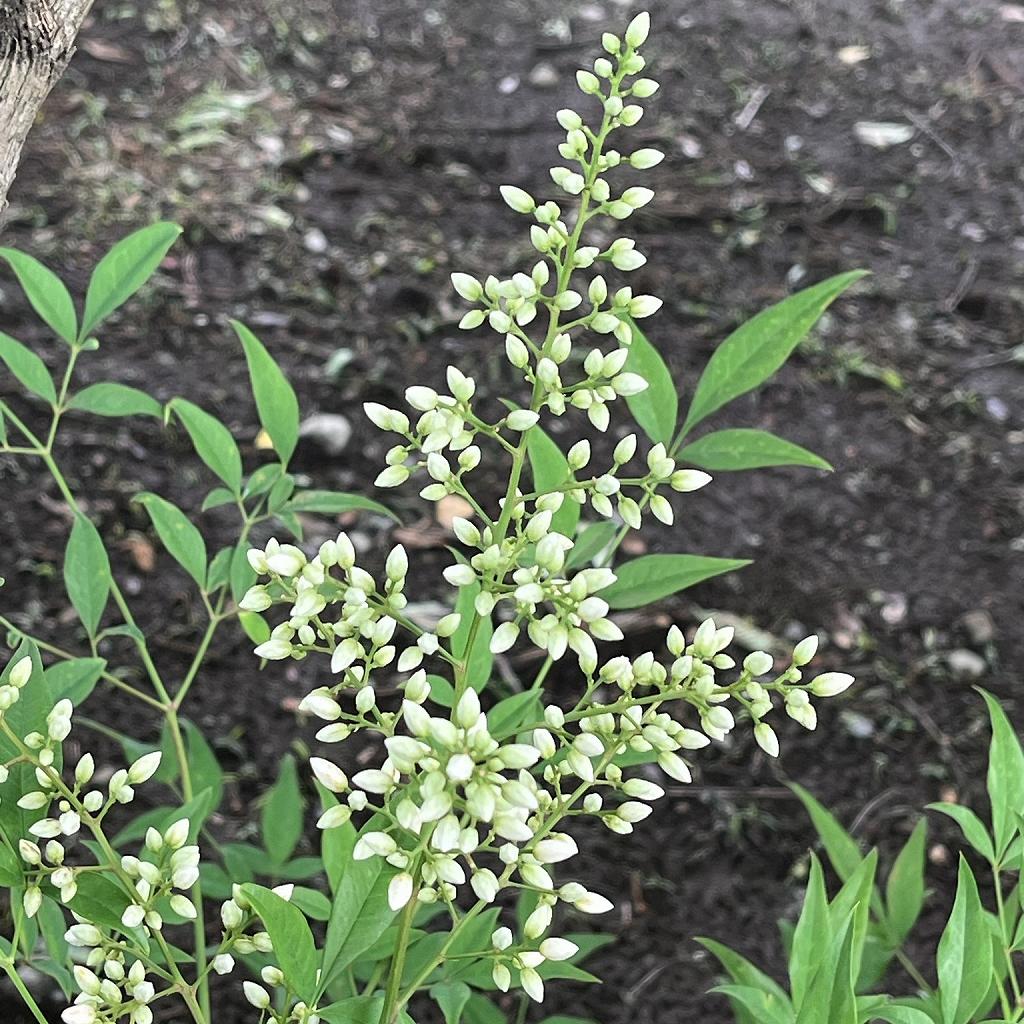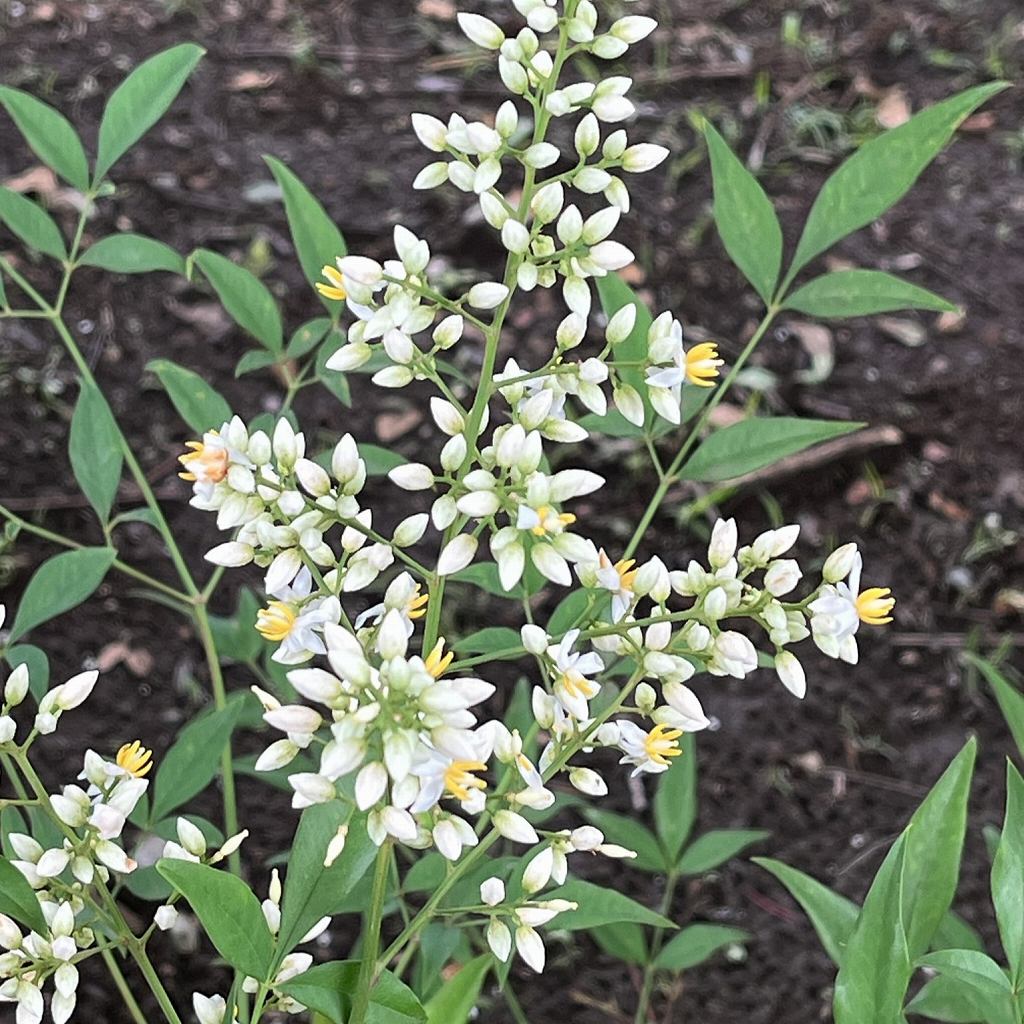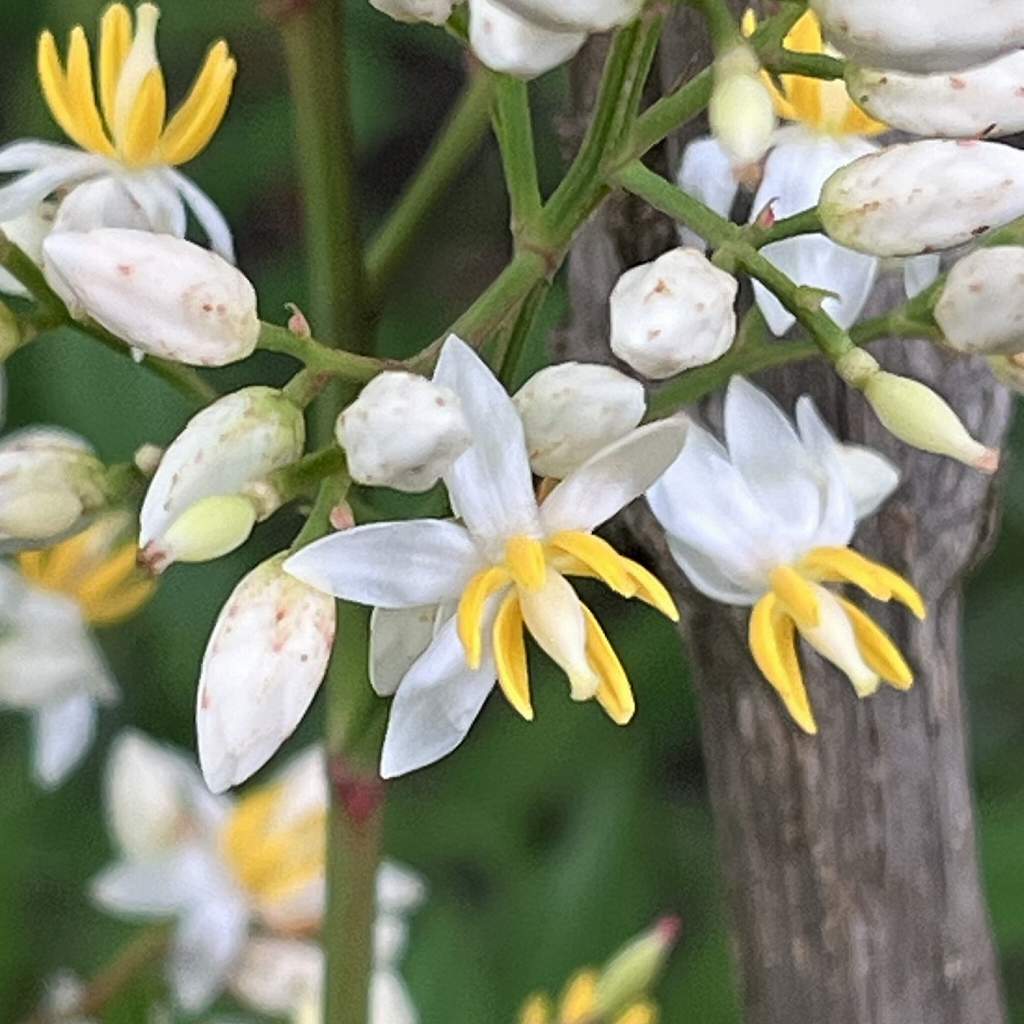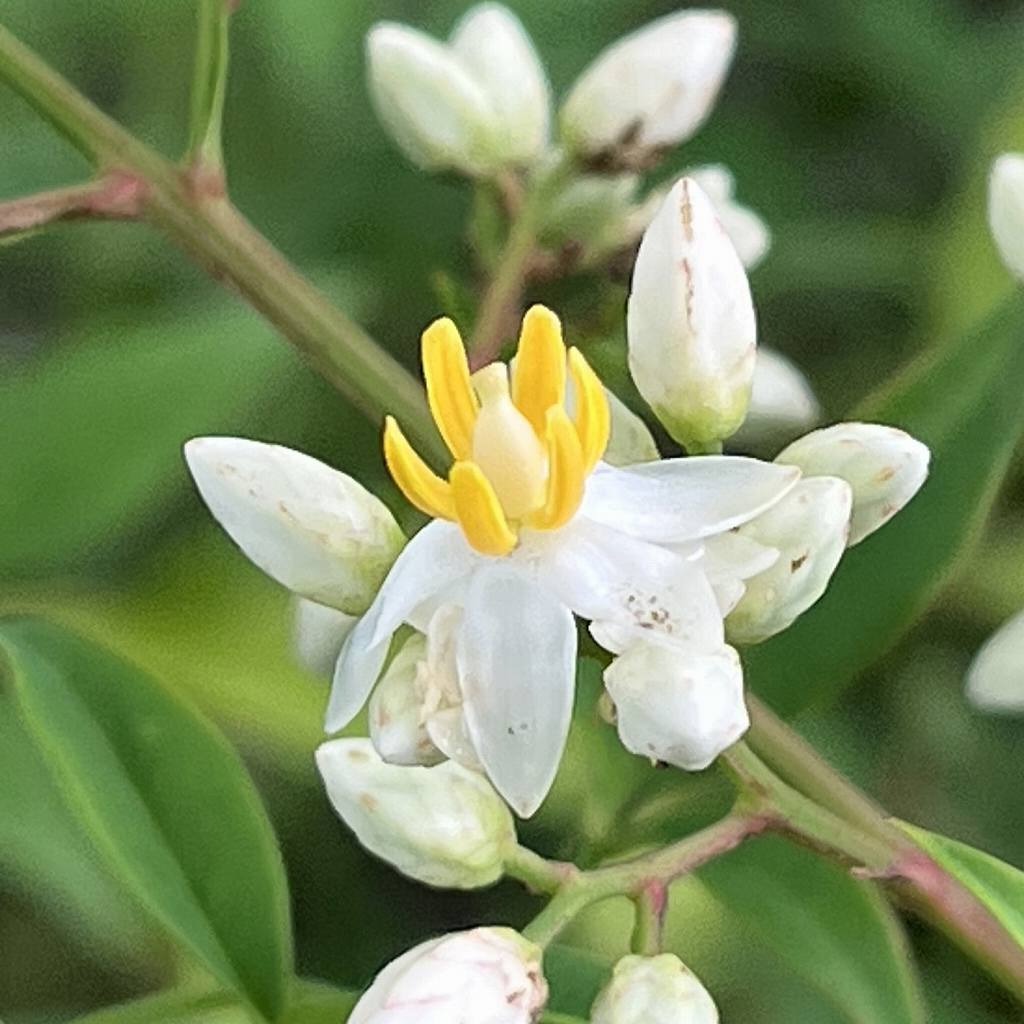ナンテンは古くから薬用・観賞用で栽培され、山野にも自生。「難を転じる」縁起物として玄関や床の間に飾られたり、料理に添えられます。
Nandina has been cultivated for medicinal and ornamental purposes since ancient times, and grows wild in the mountains and fields. They are displayed at entrances and alcoves as lucky charms to “avoid difficulties,” and are added to dishes.
【仮名】ナンテン
【和名】南天
【英名】Nandina, Heavenly Bamboo
【学名】Nandina domestica
【誕生】12/ 05, 12/ 14, 12/ 29
【開花】05, 06, 07月
【花色】White
ナンテン
ナンテンの概要

ナンテンはメギ科ナンテン属の常緑低木。日本では本州の関東地方以西、四国、九州、国外では中国、インドに分布しています。古くから果実や葉の薬用・観賞用で栽培が広がり、山野にも自生。さらに「難を転じる」縁起物として、玄関や床の間に飾られたり、料理に添えられます。
ナンテンの名前

ナンテンの和名は中国名の「南天燭」や「南天竹」の略語です。南天は「南天竺」に由来し、インドから渡来したと考えられたため。燭は「灯り」という意味で燃えるような赤色の果実に由来します。竹は枝や葉の形状が似ているため。ラテン語の属名ナンディナも和名に由来します。
ナンテンの姿形

ナンテンの幹は叢生するものの分枝せず、樹皮は灰褐色で縦に割れ目が入ります。葉は羽状複葉で互生。小葉は先の尖った披針形で光沢があります。花は枝先で小花が円錐状に集まって咲き、小花は白色の花弁が6枚、黄色の雄しべが6本。花後は球形の液果を結び、赤色に熟します。
ナンテンの種類

ナンテンの変種「白南天」は、液果が熟しても乳白色のままで赤色に変わりません。江戸時代に作出された矮性種の「錦糸南天」は葉が細く糸状。「お多福南天」は花も実もほとんど着きませんが、丸みを帯びた葉が赤色・黄色・橙色へと変わるため、公園や庭園などに植えられます。
ナンテンの利用

ナンテンの果実はアルカロイド系の成分ドメスチンなどを含有。生薬「南天実」が咳止めなどに用いられます。葉は静菌作用のあるナンジニンなどを含有。生薬「南天葉」が解毒のほか、食品の防腐にも用いられます。根は痛み止めなどに。材木は箸や床柱などの工芸に用いられます。
Nandina
Nandina is an evergreen shrub in the family Berberidaceae. In Japan, it is distributed west of the Kanto region of Honshu, Shikoku and Kyushu, and overseas in China and India. Cultivation has spread since ancient times for the medicinal and ornamental purposes of its fruits and leaves, and it also grows wild in the mountains and fields. Furthermore, they are displayed at entrances and alcoves, or added to dishes as lucky charms to avoid difficulties.
The Japanese name of Nandina is derived from its Chinese name due to its medicinal properties, and its Chinese name comes from India, where it was thought to originate. The Latin genus name Nandina is derived from the Japanese name.
Nandina’s trunk is clustered but unbranched, and its bark is grayish brown with vertical fissures. The leaves are pinnately compound and alternate. The leaflets are lanceolate with a pointed tip and are shiny. The flowers bloom in cone-shaped clusters at the tips of the branches, and each floret has 6 white petals and 6 yellow stamens. After flowering, it produces spherical berries, which ripen to red.
The Nandina variety “leucocarpa” remains milky white and does not turn red even when the berries ripen. “capillaris”, a dwarf species created in the Edo period, has thin, thread-like leaves. “Otafukunanten” produces few flowers or fruits, but its rounded leaves turn red, yellow, and orange, so it can be planted in parks and gardens.
Nandina fruit contains alkaloid components such as domesticine, and is used as a herbal medicine for cough suppressants. The leaves contain nandinine, which has bacteriostatic properties, and are used as a herbal medicine for detoxification and food preservation. The root is used as a pain reliever. The wood is used for crafts such as chopsticks and floor pillars.


